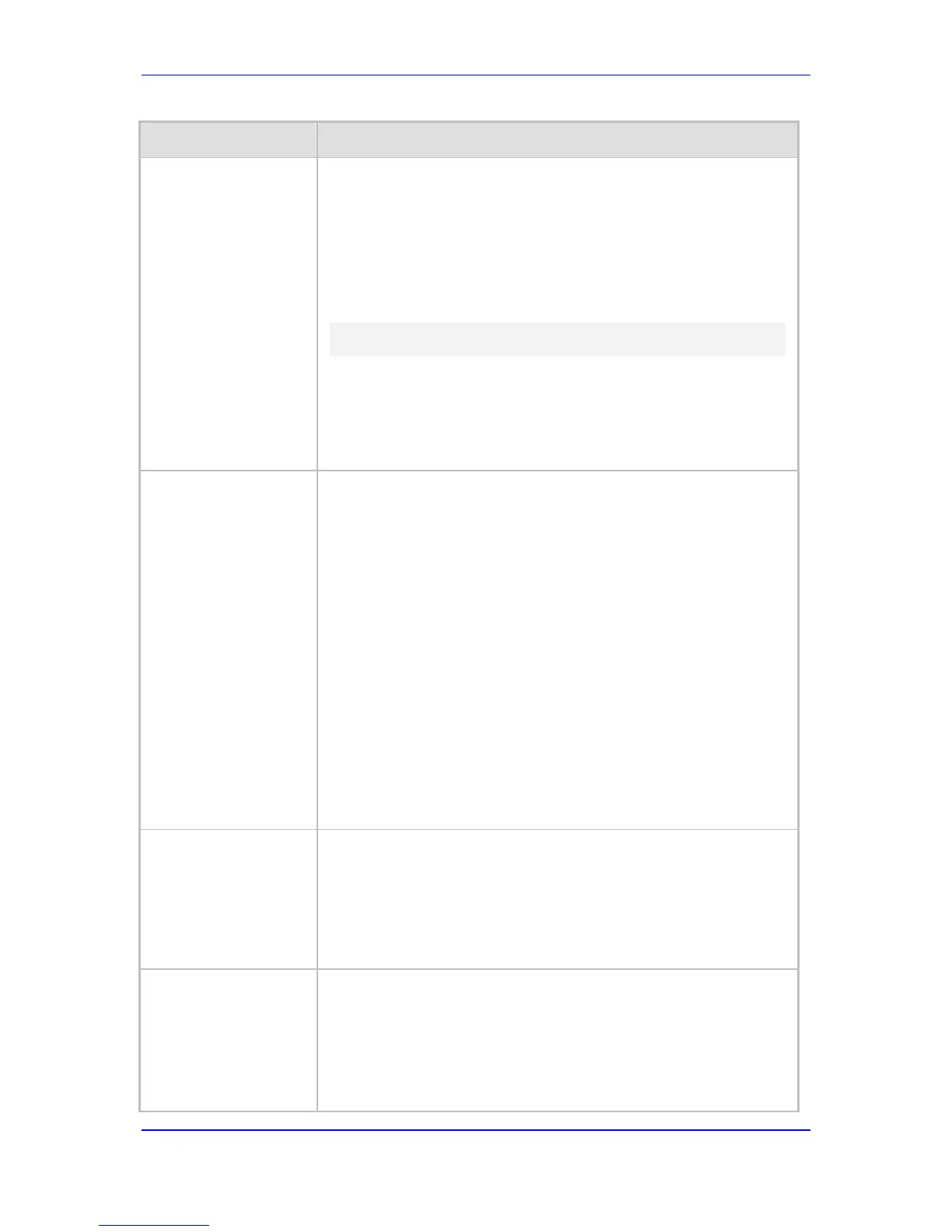message body (application/isdn) in the SIP message and then sends
the data in an ISDN message to the PSTN.
If the raw data in this SIP header is suffixed with the string "ADDE",
then the raw data is extracted and added as Informational Elements (IE)
in the outgoing Q.931 message. The tunneling of the x-isdntunnelinginfo
SIP header with IEs is converted from INVITE, 180, and 200 OK SIP
messages to Q.931 SETUP, ALERT, and CONNECT respectively.
For example, if the following SIP header is received,
x-isdntunnelinginfo: ADDE1C269FAA 06
800100820100A10F020136 0201F0A00702010102021F69
then it is added as an IE to the outgoing Q.931 message as 1C269FAA
06 800100820100A10F020136 0201F0A00702010102021F69, where,
for example, "1C269F" is a 26 byte length Facility IE.
Note: This feature is similar to that of the AddIEinSetup parameter. If
both parameters are configured, the x-isdntunneling parameter takes
precedence.
Web/EMS: Enable QSIG
Tunneling
CLI: qsig-tunneling
[EnableQSIGTunneling]
Enables QSIG tunneling-over-SIP for all calls. This is according to IETF
Internet-Draft draft-elwell-sipping-qsig-tunnel-03 and ECMA-355 and
ETSI TS 102 345.
[0] Disable (default).
[1] Enable = Enable QSIG tunneling from QSIG to SIP and vice
versa. All QSIG messages are sent as raw data in corresponding
SIP messages using a dedicated message body.
Notes:
This feature can also be configured in an IP Profile.
QSIG tunneling must be enabled on originating and terminating
devices.
To enable this function, set the ISDNDuplicateQ931BuffMode
parameter to 128 (i.e., duplicate all messages).
To define the format of encapsulated QSIG messages, use the
QSIGTunnelingMode parameter.
Tunneling according to ECMA-355 is applicable to all ISDN variants
(in addition to the QSIG protocol).
For more information on QSIG tunneling, see 'QSIG Tunneling' on
page 288.
[QSIGTunnelingMode]
Defines the format of encapsulated QSIG message data in the SIP
message MIME body.
[0] = (Default) ASCII presentation of Q.931 QSIG message.
[1] = Binary encoding of Q.931 QSIG message (according to ECMA-
355, RFC 3204, and RFC 2025).
Note: This parameter is applicable only if the QSIG Tunneling feature is
enabled (using the EnableQSIGTunneling parameter).
Web: Enable Hold to
ISDN
EMS: Enable Hold 2
ISDN
CLI: hold-to-isdn
[EnableHold2ISDN]
Enables SIP-to-ISDN interworking of the Hold/Retrieve supplementary
service.
[0] Disable (default)
[1] Enable
Notes:
This parameter is applicable to Euro ISDN variants - from TE (user)
to NT (network).

